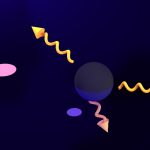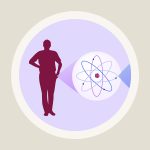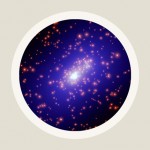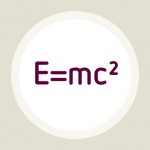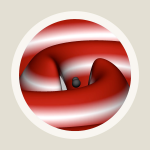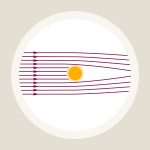Relativity and the Quantum / Elementary Tour part 1: Relativity in the micro-world
Quantum theory and relativity theory are two products of the early 20th century, developed in parallel. Not surprisingly, physicists early on began thinking about the possibility of combining the two. Could one, for instance, formulate a relativistic theory of quantum particles?
For special relativity, such thoughts were the beginning of a success story that continues until the present day. The original models of quantum mechanics dealt with point particles following the laws of classical, pre-Einsteinian mechanics. The first formulations of a relativistic quantum mechanics, substituting the laws of special relativistic mechanics for the classical ones, resulted in a stunning prediction. For every type of relativistic quantum particle, there should be a kind of mirror-image partner species – a corresponding type of anti-particle. Antiparticles have the same mass as their partner particles, but opposite charges. For instance, in a world where electrons exist which carry negative electric charge, relativistic quantum theory predicts the existence of anti-electrons with the same mass but a positive electric charge. The detection of such positrons was one of the great triumphs of the theory.
Soon, it became clear that the first relativistic version of quantum mechanics was insufficient. In order to include interactions, mediated by quantum forces, it became necessary to generalize the model. In relativistic quantum field theories, not only the matter particles, but also the forces acting between them obey quantum laws. For every force, there exist corresponding particles that act to transmit the force’s influence. For instance, in quantum field theories, the electric repulsion between two electrons is caused by the exchange of photons flitting back and forth. The emission and absorption of these “carrier particles of the electromagnetic force” are responsible for the electromagnetic interaction between one electron and another.
Quantum field theories are the basis of modern particle physics. The following photograph shows the scientists involved in constructing and running the ZEUS detector, one of the experiments at the research centre DESY in Northern Germany. Behind them is the detector itself – a gigantic construction designed to observe in detail the collisions of particles brought about in a specially designed particle accelerator:

ZEUS Detector at the DESY, with team © DESY
The fundamental standard model of particle physics describes the interactions of elementary particles by means of three fundamental forces. This state-of-the-art theory, a the veteran of many successful experimental tests with detectors like the one shown above, is a variety of relativistic quantum field theory. Current particle physics is based on the successful union of quantum theory and Einstein’s special theory of relativity.



